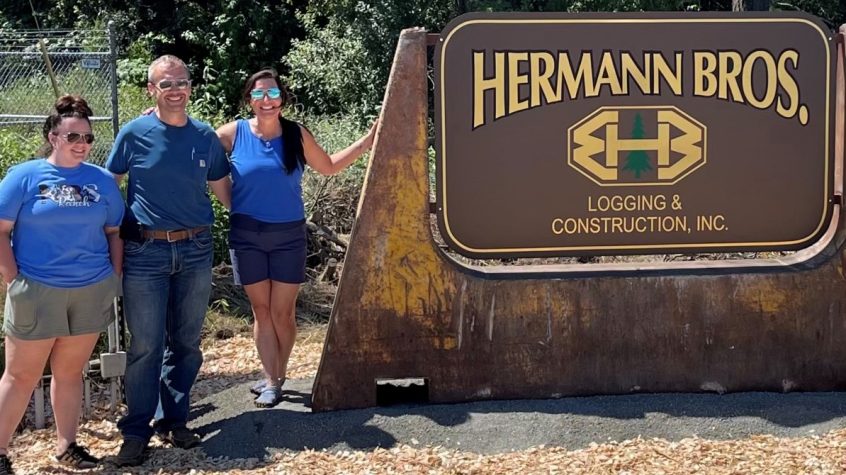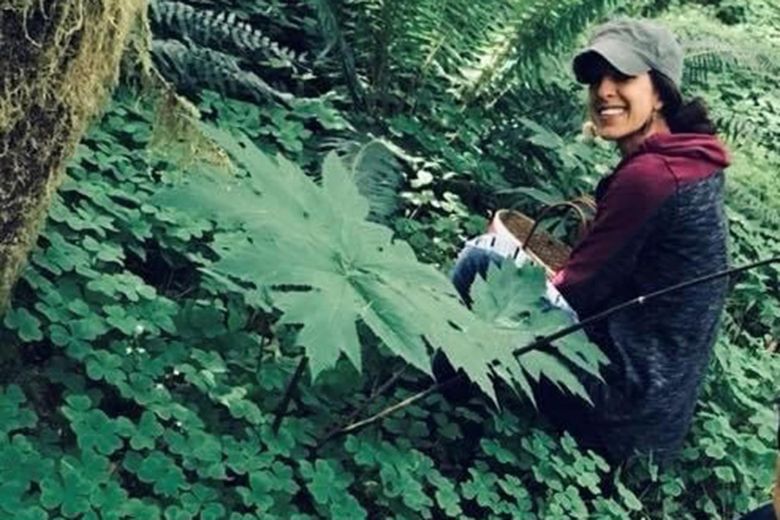When Amelia Hermann recently started driving a 30,000-pound (when empty) wood chip truck at work, she was carrying on a three-generation family tradition. “A woman having this job is unusual, but not as unusual as when my mom started driving,” says Hermann, who began working for her family business, Hermann Brothers Logging and Construction, Inc., in Port Angeles, when she was a young teenager. “I began working in the office during summer vacation, taking out the trash and whatnot. When I got my driver’s license, they let me drive the water truck, which is smaller than the wood chip trucks. I always thought it would be cool to drive the bigger vehicles.”
More and more women like Hermann are discovering rewarding careers in forestry, often seen as a traditionally male industry. That has been changing, as more women find opportunities to put their skills to work and add their perspectives to the mix.
“People are always surprised and make comments when they see me driving a big truck because women drivers are rare, but it’s becoming more common,” says Hermann, who works part time, fitting her hours in around her school schedule. “My mom was the only female driver around here back in the day, but now we actually employ several others.”
While some women like Hermann find their footing out in the field, others opt for careers that demand time both indoors and out, educating the next generation of forest workers, or leading the teams that keep managed forests running smoothly. The variety of opportunities continues to expand as the industry adapts to evolving technologies, climate change and other shifts in the landscape.
Planting the seeds
Cinnamon Bear is an education forester with Manulife Forest Management in Orting, Washington, working mainly in the Auburn and Enumclaw area. “I didn’t necessarily know this type of job could exist,” says Bear, a Karuk descendant, mother and educator who came to this position five years ago. “My life’s journey led me to this very place, where I feel I can do my best work in the world while trying to carry forward the teachings of my ancestors as a community-focused and place-oriented woman.”
Taking 20 third-graders to the woods all day in the mud and rain can be overwhelming for teachers, but Cinnamon Bear makes sure everyone has a great time connecting with the outdoors. “Students, teachers, parents and community members I get to work with are so appreciative of what the forest has to teach, which makes my job really fun and restorative,” she says. “I see a strong desire for learning more about forestry, plant identification and uses, and about the traditional ecological knowledge of the Coast Salish people, who have taken care of these places in sustainable ways since time immemorial. I think most of us are just ready for true connection and belonging with our communities, which include our plant and animal relatives as well as the land and water itself.”
Room to grow
Emerging technologies support advanced planning, outreach and analysis roles in forestry, and these business and technical positions have also created new opportunities for women, from small family-run businesses to some of the region’s largest operations.
“I think the barriers in the forestry industry are similar to any industry when people don’t see representation of themselves in certain roles,” says Megan Marleau, Western Regeneration Leader at Weyerhaeuser. “It can be hard to be the first person like yourself to jump into a role or field, but we are seeing an increasing number of opportunities – and in a wide range of positions, specialties and job levels – where women are stepping up and growing our representation and influence in the industry.”
Marleau started her career at Weyerhaeuser in Human Resources before moving more directly into the forestry side of the company. She has seen perceptions change in a short period of time.
“As a log sales manager, a lot of my customers had only dealt with men,” Marleau says. “They would make comments like, ‘Oh, I’ve never met a female log sales manager.’ It wasn’t like they were saying I shouldn’t have the job, just that it was surprising. One person even shared with me that he’d only ever worked with women who were admins. Working with me helped him see and understand that women can of course be successful in a wide variety of roles. Overall, I’ve been really encouraged by my experience so far.”
Forestry today
Marleau is quick to point out that Weyerhaeuser has been supporting women and working to build an inclusive culture for years, and the company has many women in leadership positions across its operations. “My colleagues, men and women, have been incredibly supportive of me throughout my career here,” says Marleau, who was recently promoted to a position where she oversees a team of more than 40 people managing five facilities across Washington and Oregon that include seed orchards and tree nurseries. “I’m excited to continue growing and help more women join and shape our industry for decades to come.”
“We need to remember and share that women have always helped care for and manage forests through a variety of scientific methods that are ideal for the land and its gifts (products and services) that we need to live,” says Cinnamon Bear. “Women carry a heart-based knowledge in exercising that work which is a critical component of sustainability and best practices.”
The Washington Forest Protection Association is a trade association representing private forest landowners in Washington State. Members are large and small companies, individuals and families who grow, harvest and re-grow trees on about 4 million acres.




